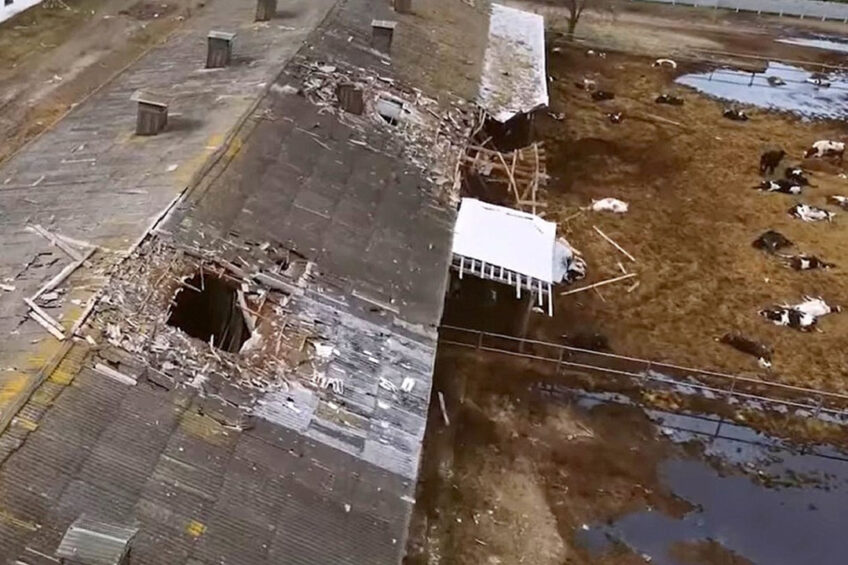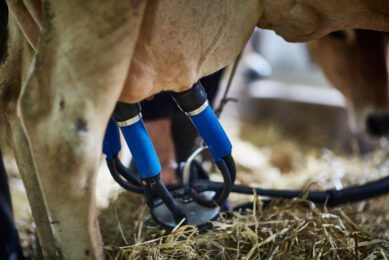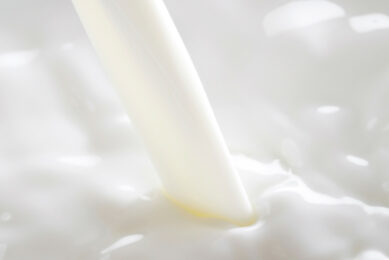Ukraine urgently needs dairy cows to replace 50,000 killed

There are fears in Ukraine that it may lose 150,000 cows, a third of its national herd, if the war with Russia does not stop by the end of this year. Due to the ongoing hostilities in the country, around 50,000 cows have already been lost in the industrial sector either by being bombed, shot or from disease.
The figures are expected to be higher as the private dairy farms have also suffered, but it is difficult to get statistics from them currently.
For Ukraine to produce enough milk, cheese and butter for its population in the near future, calls have been made for partner countries to supply dairy heifers to Ukraine in a bid to restock the national herd.
Dairy farmers barely surviving
Hanna Lavreniuk, general director of the Association of Milk Producers (AVM) in Ukraine, said some dairy farmers are barely surviving.
“Currently, the invaders are cynically and purposefully destroying the capacities of dairy farms. Farms in the frontline and occupied territories are barely surviving, often without electricity, communication, or the ability to deliver food.
“This is the situation in Kharkiv and Kherson regions, a number of regions of Zaporizhzhia region, Donetsk and Luhansk regions. Due to communication problems, it is difficult to estimate the exact loss of livestock, especially in the private sector.
“It is difficult to get reliable information about what is happening in the above-mentioned regions, but the losses of the industrial sector are at least 50,000 heads, which in monetary terms is US$80 million,” she said.
According to the AVM, there were more than 420,000 cows in the industrial sector in Ukraine at the beginning of this year, and the productivity of animals was an average of 6,860kg per cow per year.
The association calculated that with an increase in productivity to 8,500kg to 9,000kg per cow, Ukraine should have at least 600 dairy herds to meet domestic needs and use the export potential.
Impact of war
Before the war, Ukraine provided the countries of the Middle East with affordable milk protein and fat, exporting products through seaports. During the first 2 months of the war, significant volumes of so-called exchange products were accumulated in warehouses.
Hanna added: “The warehouses accumulated dry milk, dry whey, butter, and technical casein, which were planned to be sent to the countries of Asia and Africa, which were the main consumers of these products.
“The impossibility of exporting these products has a negative impact on dairy enterprises, which in turn cannot pay for the supplied milk raw materials with dairy farms.
“The shelf-life of dry milk is 3-5 months. Now the products in the warehouses will begin to deteriorate, and therefore the situation will be even more critical,” she said.
“…every day the association receives reports of new targeted attacks on dairy farms.”
The losses of the dairy sector are not final, as every day the association receives reports of new targeted attacks on dairy farms. The situation in Kharkiv Oblast is especially alarming.
“The invaders are shelling farms in Kharkiv region more regularly now. They are constantly covered with mortar or rocket fire. This is unfortunate because Kharkiv Oblast is one of the top 5 milk-producing regions in Ukraine. Powerful dairy farms are concentrated there,” said Hanna.
Kharkiv region’s losses will significantly affect the indicators of the entire dairy industry in Ukraine.
The AVM predicts that if no new territories are captured as a result of hostilities, if the cynical attacks on farms stop, then the reduction of livestock in the industrial sector can be predicted in the range of 70,000 to 100,000 dairy cows this year.
According to a pessimistic scenario, if the occupied regions are not liberated, 120,000 to 150,000 cows may be lost by the end of the year. This, says the AVM, is critical because it is almost a third of the pre-war industrial livestock in Ukraine.
After the end of the active phase of the war, Ukraine will need technical humanitarian assistance from the partner countries for the rapid restoration of livestock.
Dairy sector support
Hanna said: “It takes at least 2 years to grow a productive cow on the farm. In Ukraine, there is no such time for recovery. We need support in the form of delivery of heifers aged 5-6 months so that they will quickly produce offspring and be able to restore the herd.
“In the first year after the active phase of the war, Ukraine will have to replace at least 50,000 lost heads. We will greatly need such help. Although Ukraine is a producer of breeding livestock, its own potential is not enough.”
Plus, when the war ends, the problem of restoration of dairy farm buildings will arise. They should be rebuilt according to new modern trends being more efficient and energy-saving, according to GreenDeal.
AVM says investments in a new farm will amount to US$7,000 to $10,000 per dairy cow, which is one of the largest investments in animal husbandry. The payback of such projects is up to 10 years it predicts.
Join 13,000+ subscribers
Subscribe to our newsletter to stay updated about all the need-to-know content in the dairy sector, two times a week.










